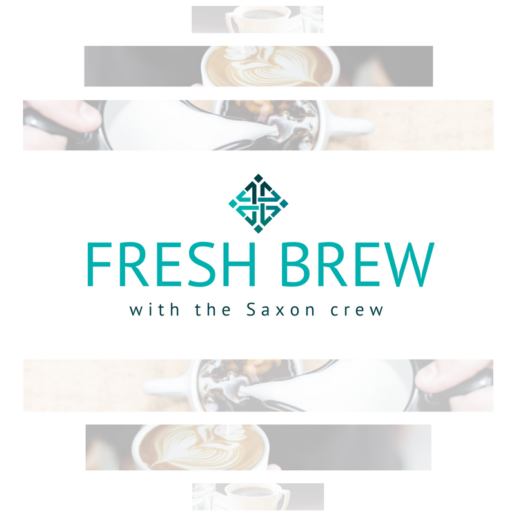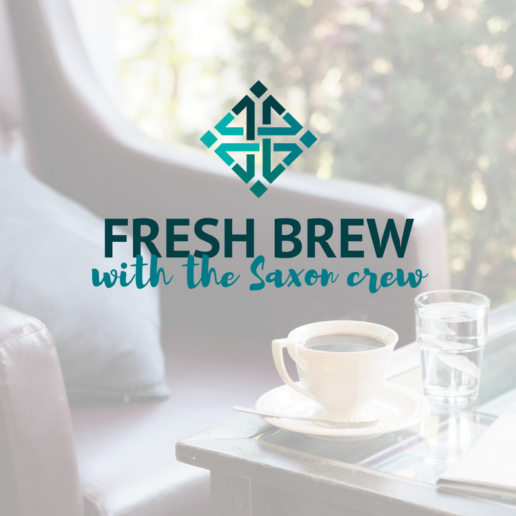3 ways to support workplace well-being during COVID-19
The coronavirus has created many struggles for employees to deal with, and some of the struggles will continue even after measures become lifted. Read this blog post to learn more.
Personal and professional worlds are colliding in ways that have never been seen before, leading employees and employers to navigate new challenges in uncharted waters. As employees continue to struggle with balancing work and personal obligations at home, they are dealing with emotional, physical and financial consequences from the pandemic. Some of these struggles will remain even after social distancing measures are lifted and the economy stabilizes, and they could have a lasting impact on people’s overall wellness.
While many companies are rightfully focused on the bottom line and maintaining business operations throughout the pandemic, it is equally important that they take steps to ensure their employees are supported throughout this tumultuous time. Employee well-being is directly tied to business health, which is why it is so important for organizations to optimize their benefits and deliver the right health and wellness offerings for their workers.
Reassess employee benefit programs
The pandemic is raising awareness that total wellbeing, not just physical health, is a key component to success for businesses and the economy. Employees that are facing at home pressures or feeling financially insecure may be less productive or distracted during the workday, which can impact company success. COVID-19 has hit companies hard. Many are looking for places to trim costs, but benefits and wellbeing programs are not an area they can afford to cut.
Diabetes, depression, mental health and financial stress are on the rise with the majority of employees dealing with unprecedented challenges like childcare, caring for family members who are sick or otherwise impacted by COVID-19 and general anxiety about their future. Cutting benefits programs now may save a few thousand dollars today only to spend tens of thousands of dollars on healthcare costs tomorrow.
Employers who understand the value of employee benefits programs will fare much better than those that guess which programs will be effective. This is an ideal time for businesses to re-assess their current well-being offerings to ensure the programs they are investing in align with the needs of their workforce. It’s also essential that employers make sure employees are aware of the wellness offerings available to them and how to use them. Therefore, it’s important for businesses to increase their communications to employees around wellbeing programs that can help provide physical, mental and emotional support through the pandemic and beyond.
Evaluate current and future employee needs
Not all people are the same, which is why one-size-fits-all programs fail. A successful well-being program should be personalized to best meet employees’ current and future needs. This can be difficult, especially when considering environmental and lifestyle factors, but with the right partner it can be done effectively. Many large employers are working with a partner that leverages social determinants of health data such as household composition, purchasing habits, education and income level and more, to identify individual employee needs.
Employers should also evaluate new types of resources to accommodate the “new normal”. Case in point: we have seen double digit increase in engagement with financial wellbeing and EAP resources. Telehealth and remote condition management programs are on the rise as well as stress management and resilience programs. For example, “Linda” has diabetes, so she needs to know the COVID-19 risks associated with her condition. She may also need extra support to ensure she is keeping up with her healthy eating and exercise regimen during quarantine. Connecting her with a remote diabetes program like Livongo or Virta Health can help Linda feel valued and stay on track. Or, “Tom” has been having severe back pain and his doctor recommends he have surgery to correct a spine-related issue. But not all health systems are offering elective surgeries right now, so he is better off with a telehealth pain management program like Telespine or Hinge Health, Physera and Simple Therapy.
This information allows employers to personalize the health and wellness plans they offer to employees and provide them with the right tools to make their healthcare journeys easier as they navigate this new way of life. Employers will also see the benefits in healthier, happier employers, increased productivity and potentially lower long-term healthcare costs.
Have a solid strategy for returning to work
COVID-19 return to work programs will require an increase in spending for heightened safety measures, such as enhanced cleaning and disinfection practices, employee daily temperature checks (which are now required by some states) and developing and implementing policies and procedures that address preventing, monitoring for and responding to an emergence or resurgence of COVID-19 in the workplace.
As businesses begin reopening workspaces, it is critical for leaders to have a solid employee engagement plan in place to keep workers safe. Be sure to clearly and effectively communicate new safety protocols to employees, so they can feel safe going to work as offices reopen. Invite employees to discuss any concerns they may have in an open forum or via a survey and involve them in problem-solving. Listen to their needs both personally and professionally as our lives will be complicated for months, and possibly years to come. It sounds cliché to say that people are companies most valuable assets. However, it could not be more true right now. It’s time for businesses to make employees’ wellbeing a priority and step up to the challenge of evolving their programming to meet current and future needs. Both the business and its employees will benefit.
SOURCE: Hinkle, C. (19 August 2020) "3 ways to support workplace well-being during COVID-19" (Web Blog Post). Retrieved from employeebenefitadviser.com/opinion/3-ways-to-support-workplace-well-being-during-covid-19
Working from home has improved employees’ connections to their pets
The coronavirus pandemic has caused many employees to work from home for months. Many of those employees have found that working from home has improved their connection with their furry friends. Read this blog post to learn more.
Richa Namballa, a data scientist and project manager with software company SAP, has been working from home since mid-March due to the coronavirus. She and her 14-year-old dachshund-mix Miles, are living with her parents as they wait out the pandemic. Miles has an enlarged heart and congestive heart failure, so he requires a lot of attention, but working from home allows Namballa to provide him with the care he needs. But Miles isn’t the only one who is benefiting from this arrangement. Having her beloved dog at her side while she works has been a boon to her productivity and mental health.
“Miles has definitely made working from home a lot more enjoyable,” Namballa says. “He's a good distraction once in a while, when you're kind of starting to burn out a little bit. It's definitely nice to be able to talk to him, pet him and take care of him.”
Being at home with Miles also helps to alleviate the worrying she typically does while at the office, as Miles’ vast healthcare needs can be distracting.
“I've had him since he was eight weeks old, so he's been here for a really long time,” Namballa says. “Being at home has also been good because I'm not as worried about him as I was when I was at work.”
Pets have played a huge role in improving a person’s physical and mental health, both pre-pandemic and throughout the coronavirus crisis. Owning a pet can reduce depression and improve a person’s mood, as well as lower cortisol, heart rate and blood pressure, according to the Human Animal Bond Research Institute.
For employees now working from home, those who are doing so with a pet have said they feel a greater bond with their pet and have felt more positive since the start of the pandemic, according to a survey by Banfield Pet Hospital.
Being able to work alongside a pet has “really helped create a sense of well being [during] this pandemic,” says Melissa Marshall, vice president of people and organization at Banfield Pet Hospital. “Pets actually being by our side creates a decompressive environment and it's been very positive.”
That bond has grown as employees spend more time at home. Twenty percent of the surveyed employees say they prefer working alongside their pets over their human co-workers.
And the pets are benefiting too: One-third of owners believe their pets appear to be happier (38%) and more playful (35%) during this time. Pets are also receiving extra love, with 65% percent of owners saying they are showing them increased affection.
However, employees are already preparing to transition back to the office as coronavirus restrictions lift, and are grappling with increased anxiety over how to manage without their pets at their side. Seventy three percent of people are concerned about going back to the office and spending time away from their pets, with 59% worried their dog or cat may suffer from separation anxiety once their new work schedule begins, according to the Banfield study.
For pet-owners anxious about what the future has in store, Marshall has several strategies employees can utilize to make the return to work as easy on their pets as possible.
For instance, employees should ease their pets into a new routine, so there isn’t such a shock for the animal when the owner isn’t there on a 24-hour basis anymore. Another tactic would be to give the pet their favorite distraction leading up to the moment of departure to pivot their attention on to something else.
“There's an element of fear. You've been spending all this time with your pet, and you have to go back to your [pre-pandemic] normal, so it shifts that human-pet bond that's been created,” Marshall says.
Employers are now tasked with figuring out how to incorporate the needs of their pet-owning employees into their return-to-work plans. Pet benefits are currently offered by 15% of organizations, and employers like SAP, Wolverine Worldwide, and Microsoft all offer employees a pet benefit such as dog friendly work environments, dog daycare or pet insurance.
Employers like SAP have recognized the role pets play in employees’ lives during COVID and beyond, and as such have enhanced their pet benefits. Recently, SAP teamed up with retailer Petco to offer a discounted wellness benefit and additional pet insurance coverage for accidents and illnesses, preventive care, and discounts on supplies and services at Petco.
“We recognize that pets are often important members of the family and can help our employees feel safe and secure — especially during times of stress,” Jason Russell, head of North America total rewards for SAP, says. “Offering pet insurance and pet bereavement leave aligns with our overall goal of supporting SAP employees and their families at work and in their everyday lives.”
Pet-friendly benefits like SAP’s pet insurance have helped Namballa afford the extensive medical bills for her dog Miles.
“I don't have to worry about if there's a huge medical expense, like an emergency room visit, because that's going to be covered. It also covers some preventive care,” she says. “I would have never thought about signing up for pet insurance before it was offered as an employee benefit.”
The benefits have also helped Namballa feel appreciated and seen by her employer, especially during times of high stress and anxiety.
“I struggled with mental health problems pretty much my whole life, and having a pet is one of the best therapies that I can think of. Pets are members of your family and they do give you unconditional love,” Namballa says. “I really appreciate it when employers acknowledge how important pets are to their employees. Pet insurance and pet bereavement leave are some of the most important benefits to people like me, and it's just it feels really reassuring when your employer recognizes that.”
SOURCE: Schiavo, A. (23 June 2020) "Working from home has improved employees’ connections to their pets" (Web Blog Post). Retrieved from https://www.employeebenefitadviser.com/news/working-from-home-has-improved-employees-connections-to-their-pets
What to Do When Scared Workers Don’t Report to Work Due to COVID-19
Throughout the globe, many are terrified of contracting the communicable disease, the coronavirus. With this being said, many essential workers are refusing to go to work with that fear in their minds. Read this blog post from SHRM to learn more.
Some essential workers are refusing to come to work out of fear of contracting the coronavirus. Their employers must weigh the employees' legal rights and understandable health concerns with the organizations' business needs. It can be a tough balancing act.
"A good first step for an employer to respond to an essential worker who's expressing fears of returning to work is to actively listen to the employee and have a conversation," said Brian McGinnis, an attorney with Fox Rothschild in Philadelphia. "What are their specific concerns? Are they reasonable?"
McGinnis said that employers should consider whether it already has addressed those concerns or if additional steps are needed. Often, having a conversation with the employee "will avoid an unneeded escalation," he said.
Employees' Legal Rights
What if that doesn't work? Tread cautiously, as employees have many legal protections.
An employer usually can discipline workers for violating its attendance policy. But there are exceptions to that rule, noted Robin Samuel, an attorney with Baker McKenzie in Los Angeles. Putting hesitant employees on leave may be a better choice than firing them.
Christine Snyder, an attorney with Tucker Ellis in Cleveland, cautioned, "If an employer permits employees to use vacation or PTO [paid time off] for leave, it may soon find itself without a workforce sufficient to maintain operations. Therefore, an employer may want to rely upon the terms of its existing time-off policy, which typically requires approval to use vacation or PTO, to require that leave for this reason be unpaid."
OSH Act
Employees can refuse to work if they reasonably believe they are in imminent danger, according to the Occupational Safety and Health (OSH) Act. They must have a reasonable belief that there is a threat of death or serious physical harm likely to occur immediately or within a short period for this protection to apply.
Samuel explained that an employee can refuse to come to work if:
- The employee has a specific fear of infection that is based on fact—not just a generalized fear of contracting COVID-19 infection in the workplace.
- The employer cannot address the employee's specific fear in a manner designed to ensure a safe working environment.
NLRA
The National Labor Relations Act (NLRA) grants employees at unionized and nonunionized employers the right to join together to engage in protected concerted activity. Employees who assert such rights, including by joining together to refuse to work in unsafe conditions, are generally protected from discipline, Samuel noted.
"That said, the refusal must be reasonable and based on a good-faith belief that working conditions are unsafe," said Bret Cohen, an attorney with Nelson Mullins in Boston.
ADA
Employers should accommodate employees who request altered worksite arrangements, remote work or time off from work due to underlying medical conditions that may put them at greater risk from COVID-19, Samuel said.
The EEOC's guidance on COVID-19 and the Americans with Disabilities Act (ADA) notes that accommodations may include changes to the work environment to reduce contact with others, such as using Plexiglas separators or other barriers between workstations.
The Age Discrimination in Employment Act, unlike the ADA, does not have a reasonable-accommodation requirement, pointed out Isaac Mamaysky, an attorney with Potomac Law Group in New York City. Nonetheless, he "would encourage employers to be flexible in response to leave requests from vulnerable employees," such as older essential workers, as the right thing to do and to bolster employee relations.
FFCRA
If a health care provider advises an employee to self-quarantine because the employee is particularly vulnerable to COVID-19, the employee may be eligible for paid sick leave under the Families First Coronavirus Response Act (FFCRA), Cohen noted. The FFCRA applies to employers with fewer than 500 employees, and the quarantine must prevent the employee from working or teleworking.
FFCRA regulations permit employers to require documentation for paid sick leave, noted John Hargrove, an attorney with Bradley in Birmingham, Ala.
Employers may relax documentation requirements due to the difficulty some employees could have obtaining access to medical providers during the pandemic and to encourage ill employees to stay away from work, said Pankit Doshi, an attorney with McDermott Will & Emery in San Francisco.
Hazard Pay
Although not currently mandated by federal law, hazard pay—extra pay for doing dangerous work—might be appropriate for an employer to offer to essential workers, McGinnis said.
If hazard pay is offered, similarly situated employees should be treated the same, he said. Otherwise, the employer risks facing a discrimination claim.
Andrew Turnbull, an attorney with Morrison & Foerster in McLean, Va., noted that companies with multistate operations may have legitimate reasons for offering hazard pay to employees working at locations with a high risk of exposure and not where the risk is minimal.
Hazard pay might be a good choice for public-facing jobs, where employees may not be able to observe social distancing, said Román Hernández, an attorney with Troutman Sanders in Portland, Ore.
Some localities require hazard pay in some circumstances, Doshi noted. These localities include Augusta, Ga., Birmingham, Ala., and Kanawha County, W.Va.
Inform and Protect Workers
Lindsay Ryan, an attorney with Polsinelli in Los Angeles, said that employers should keep employees apprised of all measures the employer is taking to maintain a safe workplace, consistent with guidance from the U.S. Centers for Disease Control and Prevention (CDC), the Occupational Safety and Health Administration, and local health authorities.
If employers have the means to do so, they should screen employees each day by taking their temperatures and send workers who have fevers home, Snyder said. Alternatively, employers can require employees to take their own temperatures before reporting to work, she added.
"Finally, in light of recent CDC guidance regarding the use of cloth masks to prevent infection, employers should allow employees to wear masks in the workplace and consider providing employees with cloth masks if they are able to acquire them," she said.
How employers and the economy win with remote work
Employers have been highly affected by the situations that the coronavirus pandemic has brought upon them, but so has the economy. The coronavirus has seemed to bring in a dark cloud over most situations, but now it can be looked at as helping both employers and the economy with the remote working situations. Read this blog post to learn more.
As high profile employers such as Twitter and Slack announce that they will allow employees to work from home indefinitely, other organizations have also noticed the advantages of a remote work model.
Aside from increased productivity and improved mental health for employees, employers can save $11,000 per employee on office costs and even reduce their carbon emissions, says Moe Vela, chief transparency officer at TransparentBusiness, a company that provides a remote workforce management platform.
When it comes to remote work, ”everyone wins across the board,” he says. “Remote work should be viewed no differently than a healthcare insurance package, dental insurance, paid time off, sick leave, or family leave.”
Article Sustaining an active sales pipeline
What do you do when a global health crisis has slowed your flood of new leads to a drip?
PARTNER INSIGHTS
SPONSOR CONTENT FROM
Vela shared his thoughts on why remote work is the new normal and how employers can use technology to ensure that the experience for their employees is seamless.
How does remote work benefit employers and employees?
Employers benefit tremendously. On average, an employer saves $11,000 per year per employee in a remote workforce model. They need less commercial office space, so their bottom line actually improves because they can cut down on their office expenses. If you have 500 people in an office setting, that's 500 people you need supplies, equipment and infrastructure for — those costs get dramatically reduced or go away completely.
The other benefit to the employer is that productivity goes up in a remote workforce model. There is less absenteeism, workers are happier and also healthier because you're not confined in an office space spreading germs.
Your work life balance is improved dramatically by a remote workforce model for employees. On average, an employee gets two to three hours of their day back into their life because they don't have to commute. That's two to three hours you can spend with your family, that you can engage in self care, that you can run your errands, whatever it is you choose to do.
What advantages does remote work have outside of work?
One beneficiary in a remote workforce model is the economy. When those employees get those two to three hours back, guess what they're doing: they're spending money that was not being put into the economy before.
Another beneficiary is the environment. During this pandemic, there are around 17% less carbon emissions being emitted into the atmosphere and the environment. Climate change is impacted and our environment is a winner in a remote workforce model.
How can employers ensure a seamless remote work experience?
There are three fundamental technologies on the marketplace that every employer should immediately start using. Number one, video conferencing. We're all using it, it works just fine, you’ve got a lot of options in the marketplace from Skype to Zoom, to Google. Number two, file sharing. You have all kinds of file sharing software and services out there in the marketplace. Number three, remote workforce management and coordination software. All you have to do is implement them, and the risk is mitigated almost to nothing.
How can an employee approach management about working from home permanently?
Don't be afraid to ask your employer. Communicate your request very succinctly and very clearly. Let your boss know that you've thought this through. Prove to them that you have the self-discipline, that you have the loyalty, that you're trustworthy, and that you have the environment at home to be effective at working remotely. Use the fact that you've already been doing it as an affirmation, to attest to the fact that it can be done seamlessly and productively.
Are You Pushing Yourself Too Hard at Work?
Different seasons can bring in long hours, extensive work, and multiple deadlines that require a lot of attention. Are you pushing yourself too hard? It is important to know the difference between a temporary work crunch and an everyday "norm". Read this blog post for a few key signs of pushing too hard at work.
We all have intense periods at work where multiple deadlines converge, an important deal is closing, or a busy season lasts for a few months. During these times, we may work more intensely or longer hours, but we know that the situation is temporary, and we are able to keep work in perspective. Conversely, approximately 10% of Americans are considered workaholics, defined as having a “stable tendency to compulsively and excessively work.” Whether you are in the midst of a temporary work crunch, or if working all the time is your version of “normal,” there are some key signs that you are pushing yourself too hard. These include:
You aren’t taking time off. Consistently putting off vacations (including working over major holidays), regularly working all weekend, or dismissing the idea of an occasional day off is a sign that you are burning the candle from both ends. While only 23% of Americans take their full vacation time allotted, studies of elite athletes show that rest periods are precisely what helps them to perform at full throttle when needed, and the same is true for the rest of us. While extended vacations are helpful, smaller breaks, such as taking the weekend to recharge, carving out personal time in the evening, or having an occasional day off can also be an important part of having sufficient downtime to restore your energy and counter the drain of being “always on.”
You deprioritize personal relationships. When we focus exclusively on work for extended periods, it often comes at the expense of our personal relationships. During 2018, 76% of US workers said that workplace stress affected their personal relationships, with workaholics being twice as likely to get divorced. Not taking time to connect with friends and family can also be detrimental to our health. Research shows that strong social relationships are positively correlated to lifespan and that a lack of social relationships has the same effect as smoking 15 cigarettes a day. If you are not taking time outside of work to connect socially with others and have become increasingly isolated, such that social invitations have dried up because others assume you are not available, chances are you are too focused on work.
You’re unable to be fully present outside of work. Another sign you are pushing yourself too hard is that when you do leave the office and take time to be with the people you care about, you are not able to mentally turn work off and be present with them. In 2017, 66% of Americans reported working while on vacation. Jeff, a former client of mine who is a senior partner at his law firm, has never gone on vacation without his laptop. In addition, after making a point to spend time on the weekends to connect with his daughter, he confessed to constantly thinking about work and admitted that he couldn’t help but compulsively check email on his phone every few minutes. While it’s normal to think about work periodically, it becomes a problem when we’re not able to manage our urge to give into work-related distractions, slowly eroding our most important relationships. In his book, Indistractable, author Nir Eyal points out that these distractions make the people we care about “residual beneficiaries” of our attention, meaning they get what is left over, which typically not very much.
You’re neglecting personal care. This is not the occasional skipping a shower when working from home in your sweatpants. Failing to get sufficient sleep, missing meals or existing on a diet of coffee and energy bars, or abandoning exercise or personal hygiene for extended periods are all indications that you are in an unhealthy pattern of behavior. In particular, when we sacrifice sleep for work, we are effectively working against ourselves, as sleep deprivation is shown to impair higher-level cognitive functions including judgment, critical thinking, decision making, and organization. Likewise, skipping exercise puts us at a further disadvantage. Exercise has been shown to lower stress, improve mood and energy levels, and enhance cognitive function, such as memory, concentration, learning, mental stamina, and creativity. As a former investment banker who worked 80- to 100-hour weeks during more intense periods, taking breaks to exercise, eat, and even nap in one of the sleeping rooms provided onsite was critical to maintaining my health, stamina, and productivity.
You see your value as a person completely defined by work. Failure to see a broader perspective, both in terms of how you see your value as a person as well as how you see the importance of work relative to the rest of your life, can be a sign that you are pushing yourself too hard. This myopia is usually driven by deeply held limiting beliefs that create a contracted worldview. Elisa, the head of engineering at a tech company, pushed herself and her team incredibly hard. Her behavior was driven by a belief that “My value is what I produce.” To broaden her perspective, she asked others she respected about what they valued about her, as well as how they valued themselves. She was able to see not only that people valued her for other things like being a good friend, parent, or thought partner, but also that they defined their own value more broadly than their work. Sometimes, it takes a big life event, like the birth of a child or the death of a colleague or loved one, to shake someone out of this restricted perspective. Another way to broaden your perspective in the absence of these events is to have interests outside of work, which can be a good reminder that work isn’t everything.
While we all need to shift into high gear from time to time, keeping work in perspective with the rest of our lives, and taking care of ourselves and our relationships are key to achieving long-term success, both personally and professionally.
SOURCE: Zucker, R. (03 January 2020) "Are You Pushing Yourself Too Hard at Work?" (Web Blog Post). Retrieved from https://hbr.org/2020/01/are-you-pushing-yourself-too-hard-at-work
Working on Wellness: 5 Tips to Help You Prioritize Your Health
When it comes to personal wellness, it doesn't have to be one or the other when choosing health versus work. Read this blog post for five tips on prioritizing personal health and wellness.
Wellness is such a buzzword these days. It seems like everyone is talking about it, and with good reason. Taking care of yourself needs to be a top priority in your life, but that doesn’t mean it's easy. I know that you may feel stressed and overwhelmed with work, family, friends, or other commitments, but at the end of the day, your health should be your most prized commodity. Most people understand the importance of caring for their health, but cite numerous reasons why they just don’t have the time – namely, work. However, it doesn’t have to be one or the other. You can prioritize your well-being and succeed in the office. In fact, my theory is that an individual's personal wellness must be a top priority in order to achieve one's major corporate goals. Not only do I teach this method, but I live it too. Every. Single. Day.
Here are my 5 tips that will help you prioritize your health while thriving in the corporate world.
Find Your Passion
Deciding that you are going to start focusing on wellness is usually not difficult. However, when you are dreading the time you have set aside to go to the gym, that’s when it gets hard. It’s challenging to motivate yourself to do an activity that you despise doing, and it's even harder to keep it up. This is why it is important to find a task that you enjoy doing within the realm of wellness possibilities. Do you like lifting weights or doing aerobic exercises? Maybe swimming, yoga, or hiking is a better fit for you. There are a multitude of possibilities and something for everyone.
Personally, I’m a runner. I participate in ongoing marathons and IRONMAN 70.3 competitions across the globe. Over the next few months, I will embark on several major races. In September, I will be running a Marathon in Capetown, South Africa. The following month, I am going back for my second year of running 55 Miles through the Serengeti in Africa. To keep the momentum going, in November, I will be running in the TCS New York City Marathon. And then in December, I will be completing an IRONMAN 70.3 Cartagena in Colombia. I did not always compete in these types of races, but I worked up to it through rigorous training sessions. Embracing the open terrain while enjoying some time alone with my thoughts as I run is incredible.
Be Mindful of Your Time
The best advice I can give to those who worry that they don’t have enough time to exercise is to be aware of how you are using your time. Are you using your time efficiently to the fullest potential? Is there anything you can cut or shorten the time you devote to? Get creative. For example, I actually develop many of my business strategies while working out. I am able to let my mind ruminate about work while my body focuses on my wellness. Make time to move. Even if it’s just a little bit every day. Try taking a ten-minute break and going on a walk. Afterward, you’ll feel great and will probably be more productive too. The email can wait; your health cannot.
Follow a Routine
Consciously making the effort to prioritize your wellness isn’t always easy. This is why it is important to follow your routine. Stopping for even a few days makes it hard to get back into it again, and restarting again after a break is always the hardest part. On the other hand, sticking to a routine helps working out feel natural. It becomes a part of your day, an activity that happens somewhere in between waking up in the morning and falling asleep at night. Schedule your fitness into your calendar. If it’s on the calendar, it is real – just like that phone call or meeting you have scheduled after your workout. Setting aside time for your health is like making a promise to yourself to care about your well-being. Honor that promise.
Transfer Your Skills
It’s important to remember that working out is not just good for your body. Exercise also helps develop valuable skills that you can transfer to the workplace. I have completed many races this year, all of which help me to stay focused in my personal life and in the office. Following a schedule and setting goals when training and competing fosters an organized and centered mind when I am at work. I can focus on what I want to execute and achieve. The cadence of training is very similar to the way that I operate in the corporate landscape. Similarly, I attribute many of my most prized leadership qualities – including motivation, perseverance, and a stellar ability to navigate the daily struggle of balance – to an active and healthy lifestyle that is the impetus for day-to-day accomplishment. I first learned how to motivate myself to prioritize my well-being and how to persevere when training becomes a challenge. I worked to find a balance that fits my lifestyle. Then I was able to transfer those skills that I learned to helping others. After all, if you cannot take care of yourself, you cannot take care of your team.
Reward Yourself
Choose a fitness goal and obtain it, whether it's running a 5K or something completely different. Every time you train, you'll become stronger. Then, reward yourself when you make progress, whether it’s with a new outfit, new running shoes, or a pedicure that you have been dying to have. You worked hard for a goal and accomplished it, so treat yourself! Likewise, don’t forget the little victories. Be proud of yourself for training each day and be content with what you achieved. You are setting yourself up to be a happier and healthier you—and that is no small thing. This translates to the business side of things as well, the sense of completion.
Prioritizing your health may seem like something that is out of reach for you, simply because it just doesn’t fit into your schedule. But that’s not necessarily the case. If you have the right mindset going in and make a conscious effort, you can focus on both your wellness and corporate life. And you'll be thankful you did!
SOURCE: Vetere, R. (Accessed 1 November 2019) "Working on Wellness: 5 Tips to Help You Prioritize Your Health" (Web Blog Post). Retrieved from https://www.corporatewellnessmagazine.com/article/five-tips-to-prioritize-health
A better place to work: How well-being impacts the bottom line
Did you know: One in 10 employers are skeptical about the value of well-being programs. Health challenges, near stagnant wages, financial stress and more can take a personal toll on your employees, causing their stress levels to rise. Read this blog post to learn more.
Logically, employees bring their “whole selves” to work. Unfortunately, health challenges, relatively stagnant wages, heightened financial pressures, always-on technology and contentious geo-political climates around the world all take a personal toll on employees in the form of rising stress.
Employers recognize that the health and well-being of their workers is vital to engagement, performance and productivity, yet one in ten are skeptical about the value of well-being programs. But by learning from peers’ experiences, employers can take steps to help employees improve their well-being through access to related programs and services. And that contributes strongly to the overall success of the organization.
Survey says
According to the 252 global employers polled in the Working Well: A Global Survey of Workforce Wellbeing Strategies, building a culture of well-being is a higher priority than ever. Fully 40 percent of organizations believe they’ve actually achieved it, up from 33 percent in our 2016 survey. Of those who have not, another 81 percent are making plans to get there.
Top priorities for wellness programs in North America were to reduce stress and boost physical activity. Stress is a bottom-line issue for employers: 96 percent identified employee stress as the biggest challenge to a productive workforce.
Closely related priorities were improving nutrition and work-life issues, addressing depression and anxiety, and getting better access to health care services. On the latter, discussion with many employers confirms this includes sufficient access to mental and behavioral health providers—directly related to the top challenge of stress and its more serious potential debilitative consequences that can include anxiety, depression, addiction and more.
Health
The most frequently offered employee health benefits which respondents also assessed as most effective included the following:
- Employee assistance programs (EAPs): By far the most frequent program, offered by 86 percent of global employers and 96 percent of US respondents. About 7 in 10 of those who offer an EAP said it’s effective in achieving their objectives, although actual experience reveals a wish that many more employees would take full advantage of EAP services. Know your numbers assessments, including health screenings and health risk appraisals, rose in prevalence globally and were considered effective by 86 percent of respondents.
- On-site care: While smaller numbers of employers offer on-site immunizations, delivery of medical care, or fitness centers, they were still rated at just over 80 percent effective – demonstrating that convenience and access can remove barriers and enhance results.
- Flexible working policies: These rose in prevalence over our last survey, consistent with other research demonstrating that multiple generations prize work flexibility to enable balance and help manage life’s stressors.
- Wearables: Sensors and trackers also rose in prevalence. Globally, two-thirds of respondents credited them with effectiveness in monitoring and perhaps motivating healthy activities.
The survey also found health literacy is required to engage and drive behavioral change, and employers need targeted solutions to build it.
Finances
Validated by other research, a majority of employees live paycheck to paycheck today. Of US respondents, 87 percent reported financial distress among employees (the global average was 83 percent). Employers cited negative bottom-line results from financial stress, such as lower morale and engagement, delayed retirement and lower productivity, among other detrimental impacts. Other studies show financially stressed employees spend three hours or more each week distracted by it.
In prior years, this survey showed a top focus on saving for retirement; now, non-retirement-related objectives are rapidly catching up as priorities. It’s hard to focus on retirement when current needs are pressing. As a result, well over 7 in 10 employers also seek ways to ensure adequate insurance protection, help in saving for other future needs, better handling day-to-day expenses, reducing debt, and having emergency savings.
ROI vs. VOI
Just under half of respondents have specific, measurable goals or targets and outcomes for their well-being programs overall. But measurement is tricky, and 45 percent of respondents noted a lack of resources to support measurement as the top barrier to metrics. Nevertheless, only 8 percent perceived “no measurable return.”
Of those measuring the health care cost impact, 54 percent reported their programs were reducing trend by 2 to 5 percentage points per year. Financial well-being ratings were more challenging, with only 4 percent globally saying they have objective data to demonstrate their financial well-being program effectiveness.
Concurrently, many placed their bets on technology tools to inform program design and outreach: 84 percent rated predictive analytics as effective in helping to support well-being, even if just over a quarter offer it today—another half plan to do so in the next 2 to 3 years.
A value-of-investment priority emerges from the data. Employers intuitively pursue programs that build goodwill by providing helpful resources. The top four objectives globally focused on engagement and morale, performance and productivity, attraction and retention, and overall, enhancing the total rewards offering while managing spend. While reducing health care costs was the top objective for the US, it was fifth globally. Other objectives linked the organization’s image or brand and values and mission—if the company has a message to external customers, it needs to “walk the talk” internally with employees.
Holistic strategy
Compared to prior surveys, employers continue to explore new ways to support well-being, in response to employee and business needs. The historically stronger emphasis on health-related well-being continues, but financial well-being efforts are on the rise. For the US/Canada, the recent fast-rising program elements have been spiritual well-being (67 percent), retirement financial security and preparedness (57 percent), social connectedness (57 percent), and financial literacy/skills (63 percent).
In total, survey responses suggest employers understand that these well-being issues are interconnected and cannot be effectively addressed in isolation without a more holistic strategy and delivery solutions.
That’s where value of investment comes in, acknowledging that enhancing physical and emotional, financial, social, and other aspects of employee well-being can help make the organization a better place to work.
SOURCE: Hunt, R. (11 April 2019) "A better place to work: How well-being impacts the bottom line" (Web Blog Post). Retrieved from https://www.benefitspro.com/2019/04/11/a-better-place-to-work-how-well-being-impacts-the-bottom-line/
Fresh Brew with Rich Arnold
Welcome to our brand new segment, Fresh Brew, where we will be exploring the delicious coffees, teas, and snacks of some of our employees! You can look forward to our Fresh Brew blog post on the first Friday of every month.
“I enjoy helping people over 65 understand Medicare and the many options they have. Explaining Medicare in easy to understand terms, clearly showing them the options based on their doctors and prescriptions, and letting them make a choice which they are comfortable with has been one of the most gratifying things I’ve ever done.”
Rich Arnold is a Senior Solutions Agent at Saxon Financial Services.
Over the years, Rich has been a teacher, an owner of several printing businesses, and retired after 10 years of running the Sharonville Chamber of Commerce. In his spare time, Rich is actively working with non-profits, helping with community projects and spending time with his 5 grandchildren.


Diet Mountain Dew
Rich is not a coffee drinker but enjoys a Diet Mountain Dew!

Honey Roasted Peanuts
Rich enjoys sipping on his favorite brew while eating Honey Roasted Peanuts.
What's a simple addition to your day to decrease stress & improve well-being?
Gratitude is more a state of mind rather than a personality trait, varying over the course of time. A recent study shows that gratitude reduces stress and fosters well-being. Continue reading to learn more.
Previous research on the positive effects of gratitude has shown that gratitude appears to reduce stress and foster well-being (e.g. Wood et al., 2010). A recent prospective study in which people were instructed to list things they were grateful for on a daily basis supports this notion (Krejtz et al., 2016). However, little if any, research has looked at whether spontaneous (non-directed) changes in gratitude track with well-being and stress response. Rather than being a stable personality characteristic (a “trait”), gratitude may be more of a “state,” varying over the course of time—or perhaps a combination of both. Do daily fluctuations in gratitude correlate with well-being and indicators of happiness, stress, and depression? Furthermore, does gratitude serve as a buffer for stress and negativity, helping to offset toxic effects on more challenging days?
In order to look more closely at how natural day-to-day levels of gratitude may interact with various indicators of well-being and stress, researchers Nezlek, Krejtz, Rusanowska and Holas (2018) followed 131 participants for two weeks, using daily self-assessments to investigate correlations among gratitude and factors related to well-being and stress. Daily measures included gratitude, positive and negative emotional states, self-esteem, depressogenic adjustment (optimism about oneself and life), worry, and rating of important events of the day on how stressful and how positive they were. Participants reported on 10 possible categories for events: family, interpersonal, partner, work, finances, official, health, hobby, values, and other/everyday events.
As in previous studies looking at intentionally cultivated gratitude, researchers found that on every measure, gratitude was significantly correlated with well-being. On days when people felt more grateful, well-being was reported as being higher. Likewise, on higher stress days, participants reported lower well-being, and on lower stress days, participants reported greater well-being.
Using gratitude to buffer stress responses.
Importantly, they found that gratitude did in fact appear to act as a buffer for stress. On days with fewer positive events, gratitude and well-being were more strongly related, suggesting that gratitude may serve to bolster resilience, amplifying lower positive emotions on difficult days or perhaps even providing, essentially, internal positive events to compensate for a lack of external positive events. This is especially noteworthy because people often have difficulty tapping into gratitude when difficulties arise, focusing on negatives with bitterness or pessimism.
Gratitude therefore appears to provision us internally with a positive response when external events fail to do so. For people who are able to muster up gratitude when the going gets rough, not only as a generally characteristic but also as a just-in-time response to stress and negative events, gratitude can be a “bridge over troubled water” that helps to keep us from getting pulled down into a negative spiral of maladaptive coping. People who use gratitude in this way must be able to do so, rather than undermining resilient responses.
Gratitude, compassion and resilience.
In keeping with research showing that resilience is related to cognitive flexibility, active coping, optimism, and related beliefs, the current research suggests that a subset of people use gratitude automatically, generating a state of mind which buffers negative events and stressful responses to sustain greater overall well-being. Religious belief, which often emphasizes gratitude, is also associated with greater levels of resilience. In addition, recent research by Abbondandolo and Sigal (2018) also found a positive relationship between self-compassion and active coping, suggesting that there are common pathways governing gratitude, self-compassion, and resilience.
Additional research is required to further understand the causal relationships between gratitude, resilience, well-being, and related factors in order to spell out what innate factors help make us stronger, as well as what interventions can bolster overall well-being. Understanding whether those who naturally utilize gratitude to buffer stress and sustain well-being tend to do this consciously or not, how they had learned to do so during the course of development, and whether there are intrinsic factors that predispose one to feel grateful would help us learn how to teach the effective use of gratitude—especially for those who have difficulty seeing for what, if anything, there is to be grateful.
SOURCE: Smith, K. (26 March 2018) "What's a simple addition to your day to decrease stress & improve well-being?" (Web Blog Post). Retrieved from: https://www.provanthealth.com/industry-trends/2018/3/26/whats-a-simple-addition-to-your-day-to-decrease-stress-improve-well-being
Original source: Psychology Today | Grant Hilary Brenner M.D. | How Does Spontaneous Gratitude Increase Daily Well-Being?
Bringing personal services to work
Onsite employee benefits and personal services are now within reach of many employers. Read this blog post to learn more about onsite employee benefits.
Onsite employee benefits that go beyond big-ticket items like health clinics, gyms and child care centers are now within the reach of many employers.
When Cassandra Lammers, vice president of total rewards at Audible Inc., a publisher of audio books in Newark, N.J., wanted to encourage employees to schedule regular dental visits, she focused on the large percentage of the firm's employees who are part of the Millennial generation. These younger workers tended not to use their dental benefits, claims records showed.
To address the situation, Lammers began researching mobile dental services, looking for a vendor that would provide dental care onsite during the workday. That was not as easy as it sounded. "Most of these services are designed to help the elderly and the disabled who are not able to get to a dentist's office," she noted.
Also see: 6 Employee Benefits Trends in 2017
After many months of looking, Lammers connected with Henry the Dentist, a mobile dental office that parks its trailer at an employer's location for a few days to provide onsite dental services. The trailer offers state-of-the-art dental services and can serve three patients at a time.
The biggest selling points for Audible were the convenience for employees and the fact that all of the dentists were in-network providers for the company's dental plan, so audible does not have to pay for the service.
"We now schedule a few days each quarter to help employees get into a normal cycle for dental visits," Lammers said. The initial visit was scheduled to last only two or three days. However, employee demand for appointments was so great that the visit lasted six full days to serve 189 employees. Lammers expects to schedule five days per quarter going forward.
"The feedback from employees has been fantastic, and they love the convenience," she said.
Alexandria Ketcheson, marketing and brand director at Henry, said that under the company's current employment model "all our dentists are full-time employees of Henry," and that "a large part of our promise to our corporate clients is that their employees will see the same medical staff during every visit."
Fill'er Up
Onsite benefit programs should be designed to save employees time and to make their lives easier. Miami-based Carnival Cruise Line offers a range of onsite benefits to accomplish just that, including dry cleaning, a coffee shop and deliveries from a flower vendor every Friday so that employees can buy fresh flowers for the weekend.
"This is all part of our effort to be an employer of choice," said Tami Blanco, the company's vice president of shoreside human resources. "We focus on providing services that employees use or need regularly. Employees want to spend their time off with family, not running errands."
Also see: Our Employee Benefits Team
One of the more popular onsite benefits is access to Neighborhood Fuel, a service that comes to Carnival Cruise employees in South Florida and fills up their gas tanks in the parking lot while they are working.
By using a smartphone app, employees can request a fill-up, leaving the gas cap door ajar on their cars. Once the fuel truck completes the fill-up, the app sends an alert with the total cost of the gas.
So far, half of Carnival Cruise's Miami-based employees have signed up to use the service, and 75 percent of those employees say it is of great value to them, Blanco said.
Beware Upselling
When an employer offers any onsite benefit to employees, it comes with an implicit endorsement of the vendor's services, so it's important for employers to proceed with caution when choosing those vendors.
Also see: The Most Desirable Employee Benefits
Carnival Cruise Line, for example, often offers new services to one group of employees as a pilot project to see if it is something the company wants to offer to all employees.
Before offering onsite dental care, Lammers not only read the reviews of the dental providers working for Henry the Dentist but also asked pointed questions about how the service ensures the safety of employees while they are walking to and from the mobile facility and while they are inside receiving treatment. "We also wanted to understand how they operate [and] how they interface with employees, ensure confidentiality, et cetera," said Lammers, who inspected the mobile dental facility personally.
Once employees begin using any onsite service, employers should check in periodically to make sure employees are happy with the service and comfortable using it. For example, if employees feel a vendor is putting pressure on them to buy more or to upgrade, that's something an employer may want to address directly with the vendor so that employees don't feel pressured.
SOURCE: Sammer, J (5 July 2018) “Bringing personal services to work” (Web Blog Post). Retrieved from https://www.shrm.org/resourcesandtools/hr-topics/benefits/pages/bringing-personal-services-to-work.aspx













